Catholic Customs
 |
 |
 |
 |
 |
 |
 |
Christmas Candles & Bonfires -
Symbols of the Light of Christ
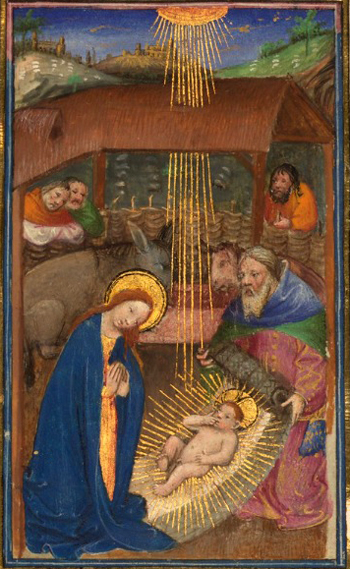
In Rome, the Pope said three Masses on Christmas day, each in a different Basilica of the city. The first was at St. Mary Major.
The second (In Aurora) was at the Church of St. Anastasia, from which the Cardinals, Bishops, clerics and choir people processed to St. Peter's. There, the Pope said the third Mass of the day, the Missa in Die Nativitatis.
As the Pope entered St. Mary Major’s, he was presented with a reed with a lit candle. With this candle, the Pope set fire to the flax that was atop the columns in the Basilica, as a sign of Christ's Second Coming, when He will come again at the end of the world with fire and sword.
The Christmas Candle
Thus, this great emblem of Christ, the candle, has been at the heart of Catholic Christmas ceremonies throughout all ages.
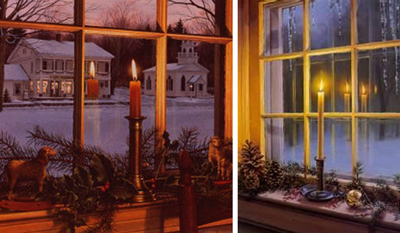
Christmas candles lit in windows
to represent Christ, the Light of the world
In 1813, the buttery of St. John's College in Oxford still preserved an ancient stone candle-holder engraved with the image of the Lamb of God that was used for the enormous Christmas candle that burned every night of the twelve days of Christmas on the high table in the center of the hall during supper. (2)
Catholic homes of the past preserved this lovely custom by lighting large Christmas candles in their homes every evening of the twelve days of Christmas to represent Our Savior, the Light of the World. On the Holy Night itself, the candle was left burning all through the night.
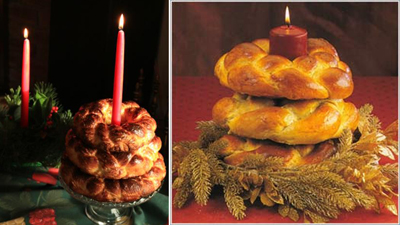
Candles adorn the Christmas brioches & kolaches
In Auvergne, France, the candle was also placed in a large brioche during a solemn ceremony. The head of the family first lit the Christmas Candle, then made the sign of the Cross over it and blew out the flame. Next, he passed the candle on to his eldest son, who blessed the candle in the same manner as his father.
This ceremony was repeated by every member of the family until the candle finally was handed to the youngest grandchild, who was privileged to place the candle in the candlestick at the center of the brioche. (4)
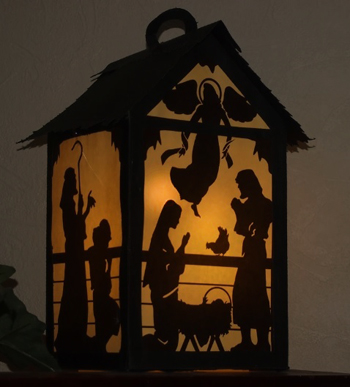
A paper latern adorned with a creche from Paraguay
The Christmas candle was even brought to Latin America where many families covered their candles with paper lanterns elaborately adorned with scenes from the Nativity and other Christmas symbols.
The bright flame burning as a symbol of Christ gave such joy to the hearts of Catholics that they lit numerous other smaller candles, thus spreading Our Lord's light throughout the house. In Germany, Christmas pyramids called Weihnachtspyramide adorned with evergreen and laurel were set up with small candles on the tiered shelves to form a beautiful Christmas scene.
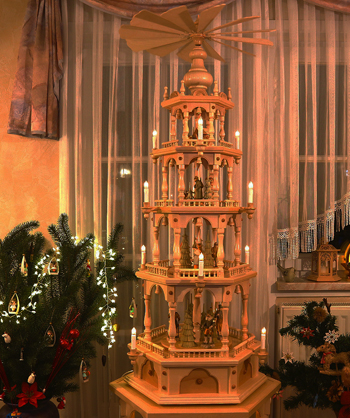
A grand German Weihnachtspyramide
with candles on each tier
According to some, this custom originated during the time of England’s Protestant Persecution, when churches were shut and priests forbidden to offer the Sacraments. On Christmas Eve, Catholic homes lit candles in their windows as a sign to the priests that they could find refuge there.
The faithful Irish Catholics prayed fervently that their house would be chosen to celebrate Christmas Mass. If they were questioned by the English authorities, they could explain that the candles and unlatched door were to welcome Joseph and Mary, and thus avoid being suspected of harboring priests. It was the Irish who brought this custom of lighting candles in the windows to America. (5)
With the jubilation of heart brought by Christmas, Catholics could not restrain their joy and reserve the candles merely to their houses. The ardor of their souls inspired them to bring lights into the very wilderness itself.
The streets and country side of many lands were lit with bonfires. Large bonfires were lit at dusk in the village squares of Northern Greece, and the merry sound of children singing carols and men ringing cowbells joined the blazing flames to send a joyous salute to the Christ Child, as well as to drive away demons. (6) The dark Argentinean sky was – and still is – filled with the lights of thousands of paper lanterns that are sent floating in the air after midnight on Christmas Eve.
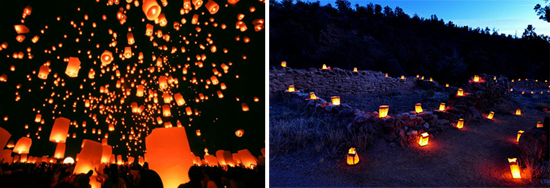
In Argentina, lighted laterns fill the sky; in Mexico fields of light welcome the Christ Child
What glorious lights filled the world in the Catholic Christmas of old! Let us strive to bring these lights to our own homes and communities by lighting candles, lanterns, and bonfires on Christmas night. Such a tribute to our Heavenly King will not go unrewarded for God will surely send His Holy Angels to dwell with those Catholics who welcome His Son with hearts ablaze with love and zeal.
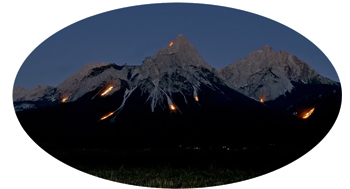
Bonfire light the night in the Alps
- Madeleine Pelner Cosman, Medieval Holidays and Festivals: A Calendar of Celebrations (New York: Charles Scribner’s Sons, 1981), p. 94.
- See sicutincensum.wordpress.com/2019/01/16/voyages-liturgiques-rogation-processions-in-rouen-6/
- William S. Walsh, Curiosities of Popular Customs and of Rites, Ceremonies, Observances, and Miscellaneous Antiquities (Philadelphia: J. B. Lippincott Company, 1898), p. 1016.
- Francis X. Weiser, The Christmas Book (New York: Harcourt, Brace and Company, 1952), p. 112.
- Christmas in France (Chicago, Illinois: World Book-Childcraft International, 1980), p. 66.
- Francis X. Weiser, The Christmas Book (New York: Harcourt, Brace and Company, 1952), p. 112-114.
- George A. Megas, Greek Calendar Customs (Athens: B. and M. Rhodis, 1963), p. 36.

Posted December 22, 2022
______________________
______________________
 |
 |
 |
 |
 |
 |


